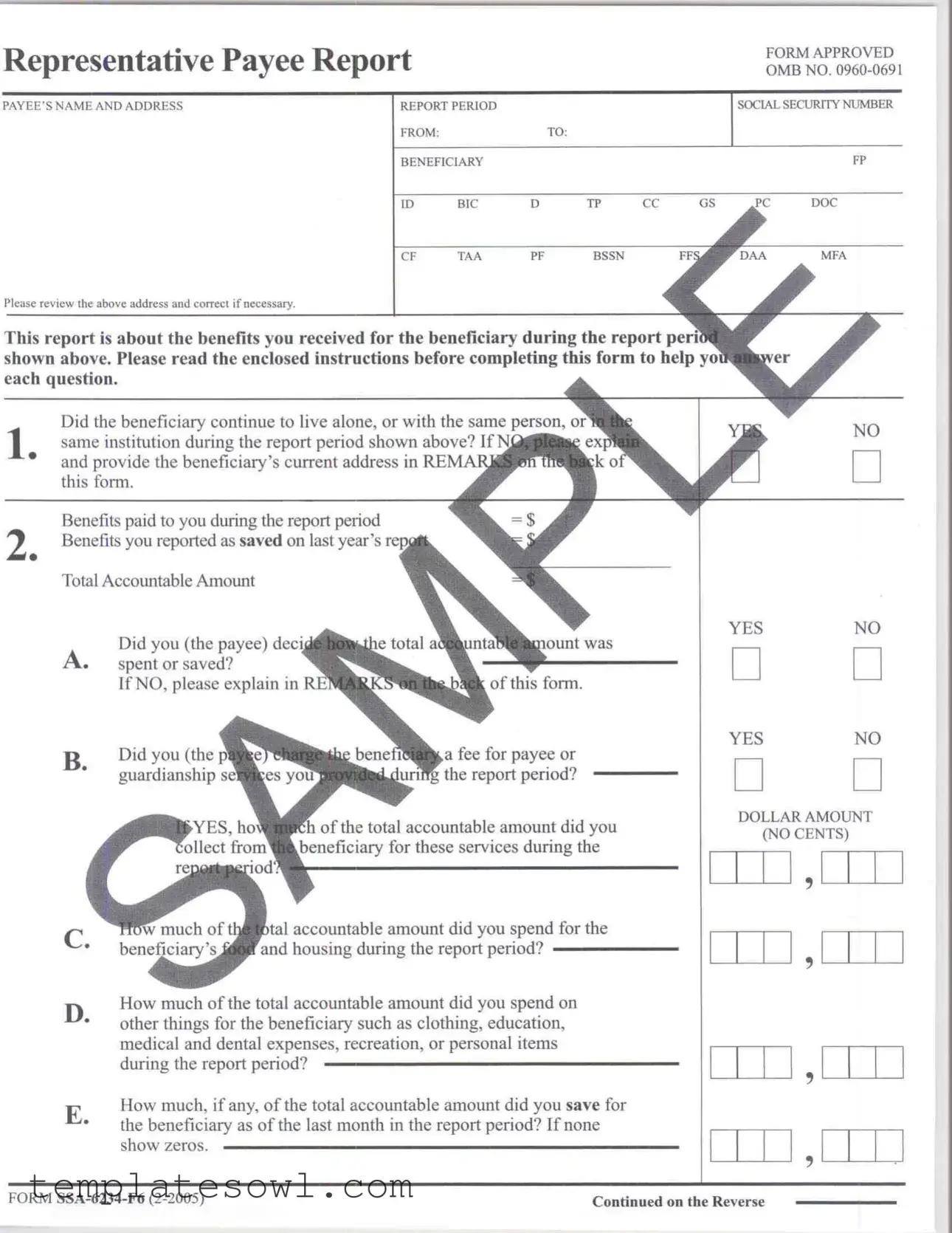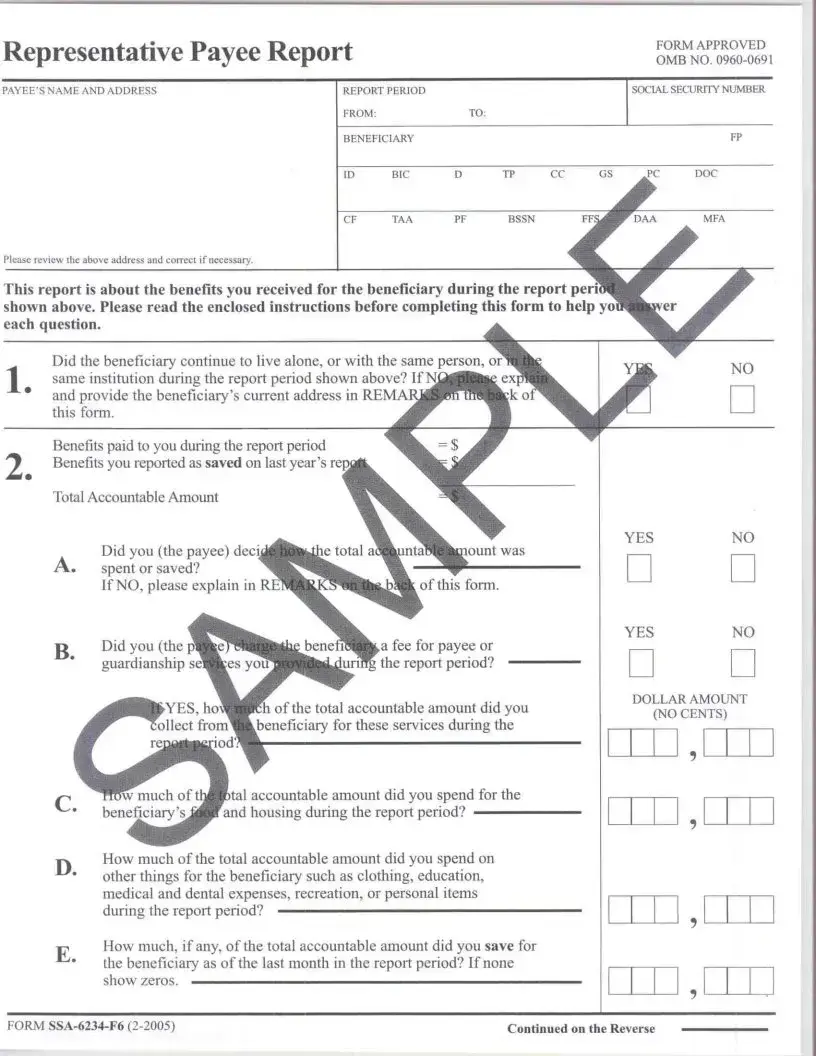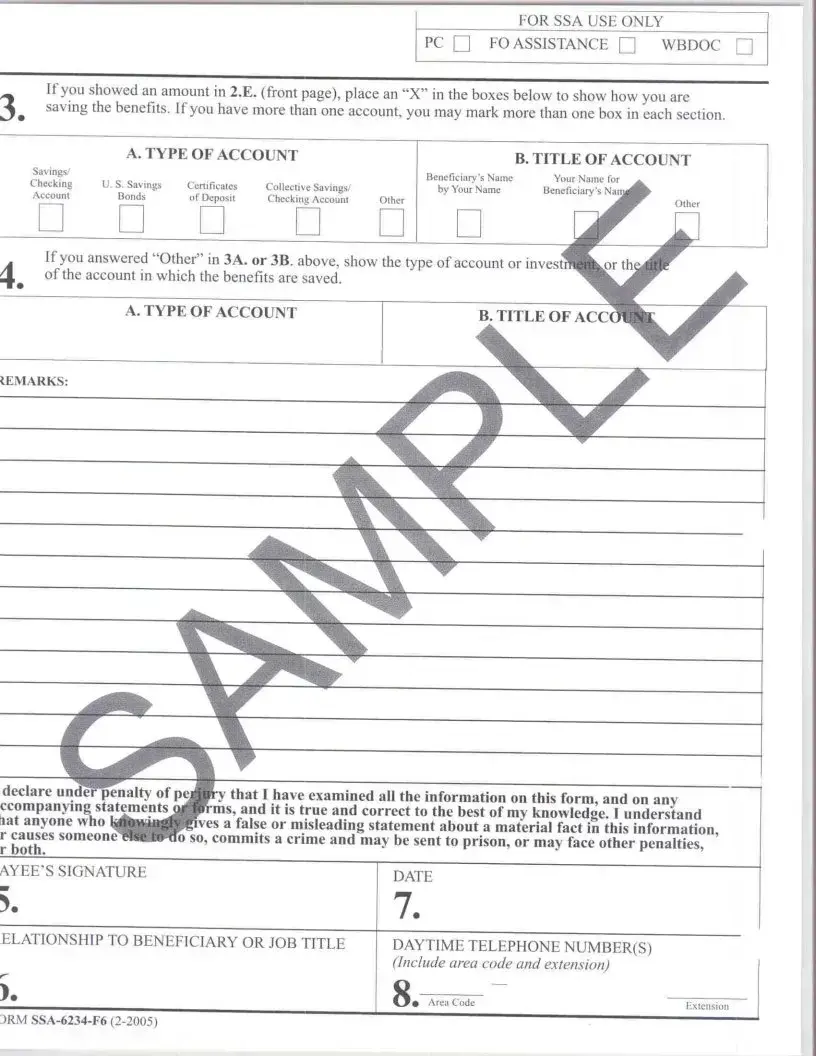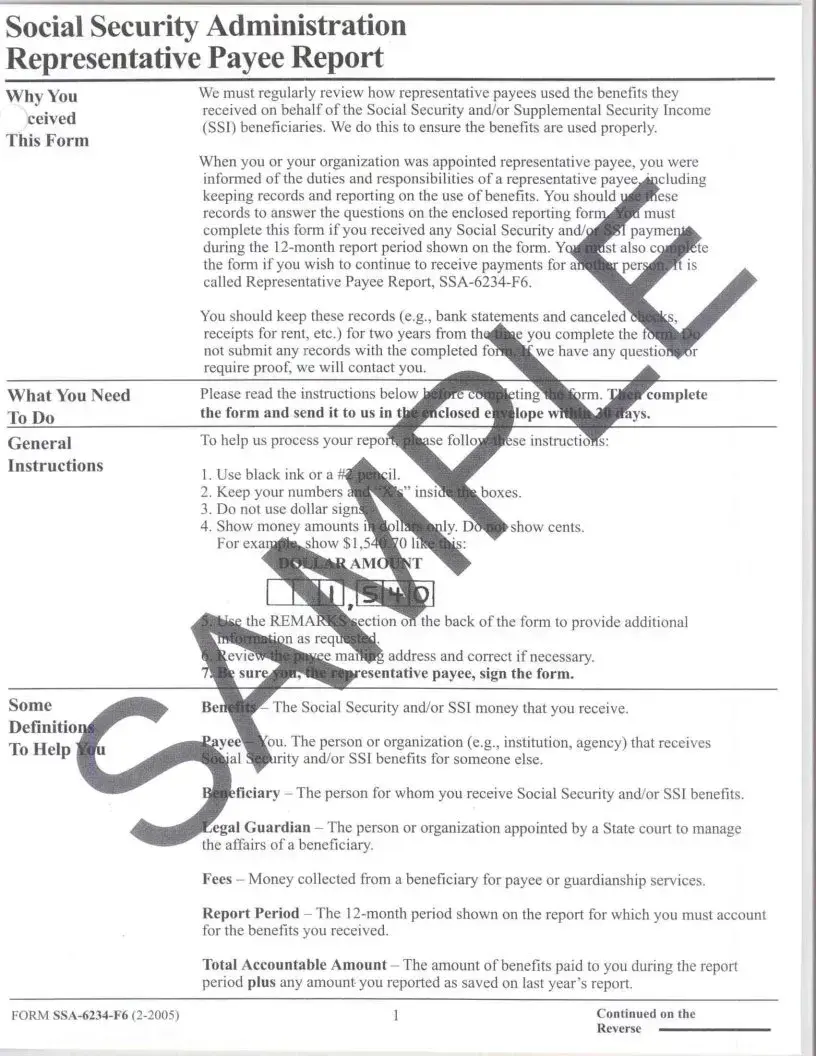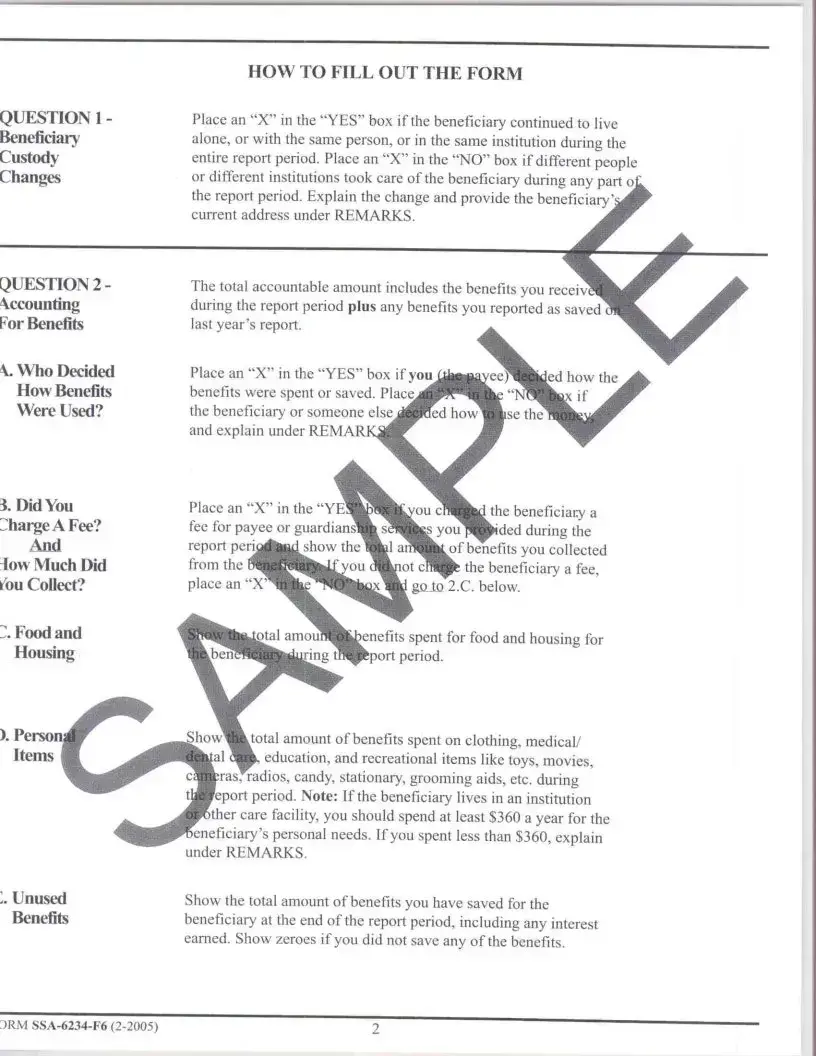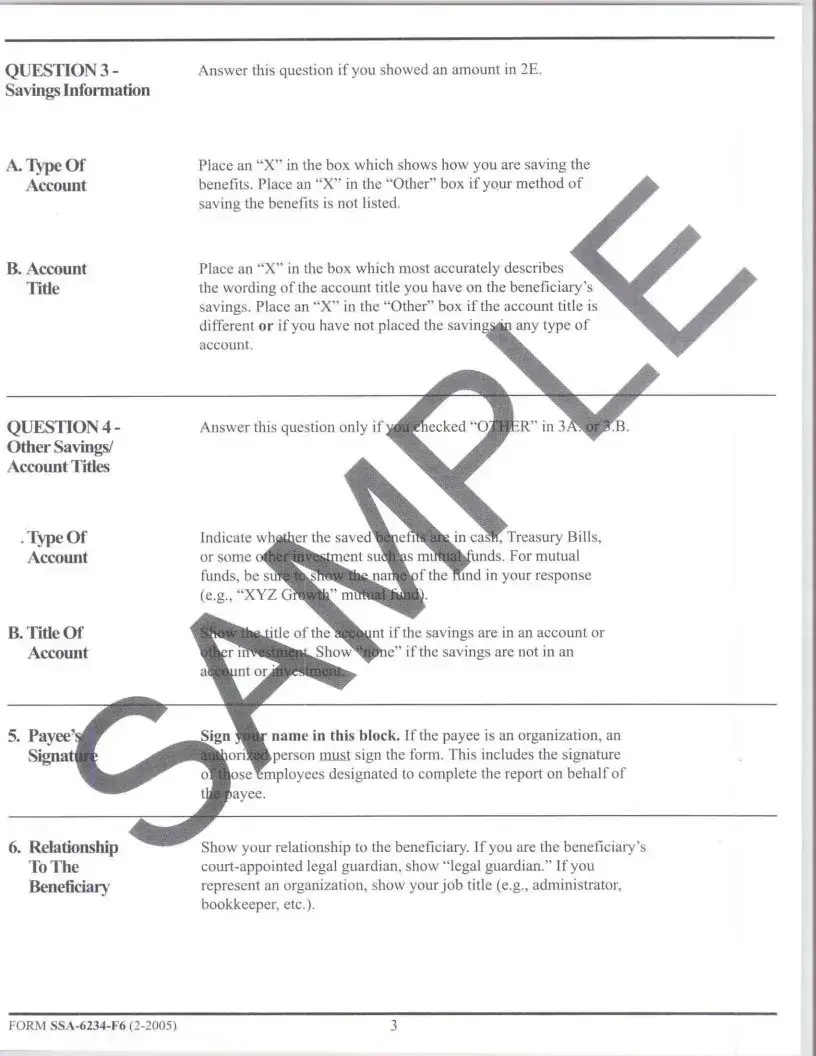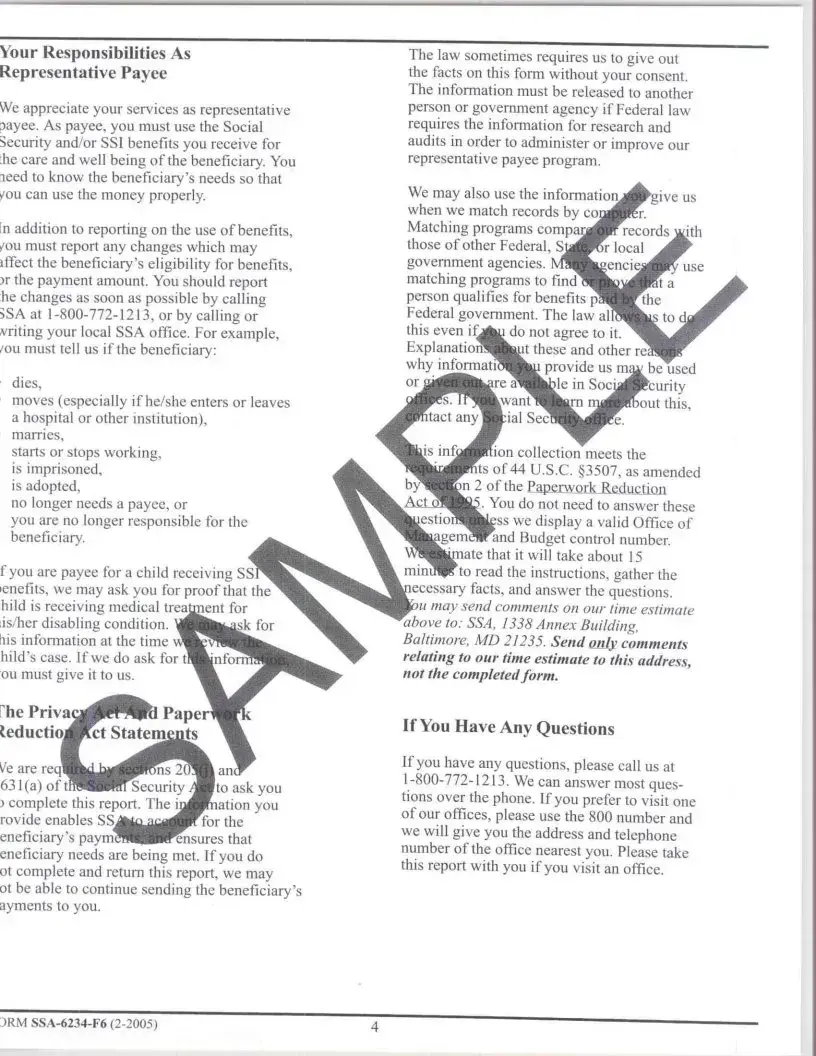What is the SSA-6234 F6 form?
The SSA-6234 F6 form, also known as the Representative Payee Report, is a document that representative payees must complete to report how they have used Social Security or Supplemental Security Income (SSI) benefits on behalf of a beneficiary. This annual report helps ensure that the benefits are being used appropriately and for the intended purpose of supporting the beneficiary’s needs.
Who needs to fill out the SSA-6234 F6 form?
Any individual or organization designated as a representative payee who has received Social Security or SSI benefits on behalf of a beneficiary during the specified 12-month report period must complete this form. This report is crucial for maintaining transparency regarding the management and use of these funds.
What information is required on the form?
The form requires detailed information about the payee, the beneficiary, and how the funds were used during the report period. Payees must account for the total benefits received, how much was spent on the beneficiary’s living expenses, and any amounts that were saved. Additionally, payees must describe the types of accounts where the saved benefits are held.
What should I do if the beneficiary's living situation changed?
If the beneficiary no longer lives alone or with the same person, or if they’ve moved to a different institution during the report period, it is important to note this change on the SSA-6234 F6 form. Additionally, include the beneficiary's new address in the remarks section for clarity.
How do I report the total accountable amount?
To report the total accountable amount, combine the benefits you received during the report period with any amounts you reported as saved in last year’s report. This total should adequately reflect all the funds under your management as a representative payee.
What if I did not spend or save any of the benefits?
If you did not spend or save any benefits, you should still complete the form. Indicate that no funds were spent or saved in the relevant sections. Providing a brief explanation in the explanation area can help clarify your situation to the reviewers.
Is it necessary to keep records related to these benefits?
Yes, it is very important to keep accurate records, such as bank statements and receipts, for a period of at least two years. While you do not need to submit these records with the SSA-6234 F6 form, the Social Security Administration may request them later for verification purposes.
What should I do with the completed form?
Once you have completed the SSA-6234 F6 form, send it to the address provided in the instructions that accompany the form. Make sure to use black ink, write legibly, and avoid using dollar signs. Keep a copy for your own records as well.
What could happen if the information on the form is false or misleading?
Providing false information on the SSA-6234 F6 form can lead to serious consequences. Not only could the payee face civil penalties, but they may also risk criminal charges if it is determined that they intentionally misled authorities. Accuracy and honesty are crucial when filling out this report.
